 Fox Hog HMA wild horse- No longer managed for "historically significant traits".
Fox Hog HMA wild horse- No longer managed for "historically significant traits".The BLM Surprise Field Office has issued a public scoping notice on their intent to remove wild horses in the Coppersmitth, Buckhorn, Carter Reservoir and Massacre Lakes Herd Management Areas (HMA). Additionally, BLM will be reviewing and/or changing the Allowable Management Level (AML) for the Massacre Lakes HMA’s wild horses.
The Massacre Lakes current AML is set at 25-35 wild horses and was “estimated” in the newly approved Surprise Resource Management Plan (RMP) but is now open for change. Click Here to review BLMs Notice and Proposals.
Currently, BLM is seeking public input regarding the removals of wild horses as well as any information to help them assess AMLs for the Massacre Lakes wild herds. While BLM has some flexibility in issuing new AMLs in the upcoming environmental assessment expected to be released this summer, (which will review those AMLs to see if they want to make any changes in the allowable population levels), BLM is generally bound by the framework established in the new RMP approved in April 2008.
So here is a little information about the Massacre Lakes HMA and the Resource Management Plan BLM recently approved.
Fox Hog Wild Horse #8689
No longer managed for "historically significant traits".
No longer managed for "historically significant traits".

The HMA is located 25 miles east of Cedarville, CA, in north central Washoe County, NV (yes, a BLM California Field Office manages a Nevada HMA). The HMA overlaps with the Massacre Lakes Allotment, Massacre Rim Wilderness Study Area, Massacre Rim Area of Critical Environmental Concern (ACEC), and the Black Rock High Rock Emigrant Trail National Conservation Area.
In March 2008, a helicopter census of the HMA counted 108 horses. The wild horse population is now estimated at 156 horses based on a 20% estimated population and that includes the spring 2009 foals. Despite the 20% “reproduction estimate”, the Massacre Lakes wild horses were last reported by BLM as officially removed in 1988 – 21 years ago – which shows an astonishing lack of successful reproduction (until the recent estimate) or an extremely high mortality rate that has kept the population successfully in check for two decades. (Of course, this assumes BLMs lack of gather activities for over 20 years has been accurately reported.)
In the RMP, BLM has chosen to manage the Massacre Lakes HMA as part of a “Complex”, meaning the wild horse populations of adjacent HMAs are considered to be interchangeable and most management proposals will include all the areas that BLM has designated as within this "Complex".
All of the HMAs included in this new Complex were gathered in September 2007 (except Massacre Lakes) and BLM reported a total of 312 wild horses were removed with 81 remaining (1). In addition to the Massacre Lakes HMA, the following HMAs are also included:
Buckhorn Wild Horse #6936
No longer managed for "historically significant traits"

Other useful information affecting wild horses in the Surprise area includes much of what BLM published, authorized and approved of in the new RMP. This includes:
The Surprise Resource Management Plan covers 1,220,644 acres. BLM oversees a total of 8 Herd Management Areas spanning 478,195 acres with an wild horse allowable management level (AML) ranging from 339-550 “head”. The maximum forage allocations given to wild horses is 6,600 AUMs or 7% of the forage issued to livestock before wild horse removals are scheduled.
When it comes to livestock authorizations, the new RMP continues to authorize livestock grazing on 1,445,443 acres (more acreage than the RMP covers?) with 92,465 AUMs doled out annually for livestock operations in the area. While livestock numbers can be rotated, large numbers pushed through during limited time frames, etc., for comparison purposes, this is the equivalent of feeding 7,705 wild horses year round within the Surprise Resource Area.
For livestock allocations, BLM determined 15.6 acres where available in the area to feed one cow and her calf per month. When it comes to wild horses, a little different formula was used and BLM determined it took 72 acres to feed a wild horse with foals being counted as one adult horse in their “excessive” AML determinations.
Despite the disparity of livestock to wild horses, BLM continues to target the “maximum” 550 wild horses as the potential cause of all rangeland degradation. The only “adjustment” BLM authorized in the new RMP was continuing to adjust wild horse AML down as they only authorized, “…some AMLs may be reduced (on the basis of monitoring) to permit recovery of riparian and upland vegetation, wildlife habitats, water quality and soils in order to achieve BLM land health standards.”

BLM also included these additional standards:
**Develop three seasonal wild horse viewing sites at Buckhorn Road, near SOB Lake; Lost Creek Road, near Cottonwood Creek; and HWY 299/8A near the Nevada California Border.
**Promote and manage wild horses in a manner that will encourage tourism and boost economic development. (Editors Note: Would that include reducing them to increase hunting or livestock revenue?)
**Manage wild horses within 8 established herd management areas (HMAs), on 478,195 acres.Enlarge the Fox-Hog HMA boundary to 127,618 acres. (See note under Changes Made to the Approved RMP). (Editors Note: In the “Final” Proposed Plan last seen by the public before BLM actually approved the plan, the Fox-Hog HMA was going to be increased to 145, 244 acres but at the last minute, BLM changed their minds and reduced this to 127, 618 acres instead).
**Prioritize selection of animals returned to BLM-administered lands after gathers based on traits desirable by public for adoption (color, size and conformance) and for historical traits in the Carter Reservoir HMA only. (Editors Note: In the “Final” Proposed Plan last seen by the public before BLM actually approved the plan, BLM intended to manage all the herds for their historically typical herd characteristics but at the last minute, changed their minds and opted for managing them for whatever buyers were looking for instead. This also nullified their initial proposal of “Genetic data would be used for guidance and confirmation regarding selection for historical herd characteristics in animals contemplated for release”. Based on the changes, now BLM doesn’t have to worry about what the genetic tests reveal or even bother sampling the wild horses at all because they don't care what their historical significance is anymore).
**Maintain herd management area (HMA) populations within established appropriate management levels (AMLs) by conducting periodic gathers.
**Eliminate unnecessary fences and minimize construction of new fences in HMAs that prevent seasonal wild horse movement or migration.
**Implement fertility control in some or all of the HMAs (based on funding) to assist in maintaining populations at AMLs. (Editors Note: BLM reported, “fertility control research was conducted (in the fall of 2003) on horses from the Buckhorn HMA. Results were sufficiently encouraging that fertility control investigations are anticipated on horses from the Coppersmith, and other HMAs.” Yet, according to the National Program Statistics, the Buckhorn wild horse population skyrocketed from 71 to 239 wild horses between FY2005 and FY2006 – 3 years after administering fertility control. Successful? Really? How?)
**Adjust AMLs when monitoring data indicates wild horse populations are not achieving a thriving natural ecological balance. Remove wild horses found outside HMAs.
**The analysis of monitoring data maybe conducted on herd management area basis or can be implemented in a multiple-use context with livestock and wildlife. Herd population monitoring and distribution data collection would occur periodically. Aerial census would be completed at 3-year intervals. (Editors Note: In other words, BLM gave themselves an open ended deal with which they MAY set wild horse populations in context with other rangeland users or they may not – consideration of the context of the thriving natural ecological balance not necessary in their analysis or decisions.)
**Forage allocation for wild horses and livestock would be managed equitably (i.e., neither having precedence over the other). If monitoring reveals adverse impacts from wild horses or livestock, adjustments would be made to the specific class of use (i.e., to wild horses or livestock). In the absence of class-specific monitoring data, stocking rates (active livestock AUMs and wild horse AMLs) would be proportionately reduced. (Editors Note: Apparently, BLM continues to view equitable allocations as 7% wild horses, 93% livestock. Additionally, since BLM has RARELY provided actually methods used or data that determines differences between wild horse use versus livestock or big game and their broad, sweeping generality's continue to be pushed through unchallenged, this statement has great potential for abuse as all BLM has to say is - we determined wild horses are continuing to cause damage in the area – just like they always do . Based on the fact that they have ALREADY shown a documented prejudice of wild horse AMLs needing to be adjusted downward [adjusting them upward was not even included as an option in the RMP], evidence suggests this is the direction BLM intends on pursuing. Finally, this area is considered one of the “Big Game Mecca” habitats in the country. The RMP indicates that elk may be coming into the area soon and how will BLM tell the difference between their notoriously degrading impacts and wild horses? So far, BLM in Nevada has generally refused to include any analysis of wildlife introductions or increased populations on carrying capacity or forage allocations, so my prediction is, expect the “natives” to be getting their piece of the forage pie, not from livestock operators but out of the 6,600 AUMs of wild horse allocations – and of course, the utilization of all species will be attributed solely to wild horses with no one being the wiser…)

In March 2008, a helicopter census of the HMA counted 108 horses. The wild horse population is now estimated at 156 horses based on a 20% estimated population and that includes the spring 2009 foals. Despite the 20% “reproduction estimate”, the Massacre Lakes wild horses were last reported by BLM as officially removed in 1988 – 21 years ago – which shows an astonishing lack of successful reproduction (until the recent estimate) or an extremely high mortality rate that has kept the population successfully in check for two decades. (Of course, this assumes BLMs lack of gather activities for over 20 years has been accurately reported.)
In the RMP, BLM has chosen to manage the Massacre Lakes HMA as part of a “Complex”, meaning the wild horse populations of adjacent HMAs are considered to be interchangeable and most management proposals will include all the areas that BLM has designated as within this "Complex".
All of the HMAs included in this new Complex were gathered in September 2007 (except Massacre Lakes) and BLM reported a total of 312 wild horses were removed with 81 remaining (1). In addition to the Massacre Lakes HMA, the following HMAs are also included:
Buckhorn Wild Horse #6936
No longer managed for "historically significant traits"

Nut Mountain HMA
Acres: 40,214
AML Range: 30-55 Horses
Removed in 9/07: 25
Estimated Remaining: 42
Bitner HMA
Acres: 53,672
AML Range: 15-20 Horses
Removed on 9/07: 64
Estimated Remaining: 21
Wall Canyon HMA
Acres: 41,051
AML Range: 15-20 Horses
Removed on 9/07: 103
Estimated Remaining: 18
Acres: 40,214
AML Range: 30-55 Horses
Removed in 9/07: 25
Estimated Remaining: 42
Bitner HMA
Acres: 53,672
AML Range: 15-20 Horses
Removed on 9/07: 64
Estimated Remaining: 21
Wall Canyon HMA
Acres: 41,051
AML Range: 15-20 Horses
Removed on 9/07: 103
Estimated Remaining: 18
Other useful information affecting wild horses in the Surprise area includes much of what BLM published, authorized and approved of in the new RMP. This includes:
The Surprise Resource Management Plan covers 1,220,644 acres. BLM oversees a total of 8 Herd Management Areas spanning 478,195 acres with an wild horse allowable management level (AML) ranging from 339-550 “head”. The maximum forage allocations given to wild horses is 6,600 AUMs or 7% of the forage issued to livestock before wild horse removals are scheduled.
When it comes to livestock authorizations, the new RMP continues to authorize livestock grazing on 1,445,443 acres (more acreage than the RMP covers?) with 92,465 AUMs doled out annually for livestock operations in the area. While livestock numbers can be rotated, large numbers pushed through during limited time frames, etc., for comparison purposes, this is the equivalent of feeding 7,705 wild horses year round within the Surprise Resource Area.
For livestock allocations, BLM determined 15.6 acres where available in the area to feed one cow and her calf per month. When it comes to wild horses, a little different formula was used and BLM determined it took 72 acres to feed a wild horse with foals being counted as one adult horse in their “excessive” AML determinations.
Despite the disparity of livestock to wild horses, BLM continues to target the “maximum” 550 wild horses as the potential cause of all rangeland degradation. The only “adjustment” BLM authorized in the new RMP was continuing to adjust wild horse AML down as they only authorized, “…some AMLs may be reduced (on the basis of monitoring) to permit recovery of riparian and upland vegetation, wildlife habitats, water quality and soils in order to achieve BLM land health standards.”
Bitner Wild Horse #9772 - No longer managed for "historically significant traits."

BLM also included these additional standards:
**Develop three seasonal wild horse viewing sites at Buckhorn Road, near SOB Lake; Lost Creek Road, near Cottonwood Creek; and HWY 299/8A near the Nevada California Border.
**Promote and manage wild horses in a manner that will encourage tourism and boost economic development. (Editors Note: Would that include reducing them to increase hunting or livestock revenue?)
**Manage wild horses within 8 established herd management areas (HMAs), on 478,195 acres.Enlarge the Fox-Hog HMA boundary to 127,618 acres. (See note under Changes Made to the Approved RMP). (Editors Note: In the “Final” Proposed Plan last seen by the public before BLM actually approved the plan, the Fox-Hog HMA was going to be increased to 145, 244 acres but at the last minute, BLM changed their minds and reduced this to 127, 618 acres instead).
**Prioritize selection of animals returned to BLM-administered lands after gathers based on traits desirable by public for adoption (color, size and conformance) and for historical traits in the Carter Reservoir HMA only. (Editors Note: In the “Final” Proposed Plan last seen by the public before BLM actually approved the plan, BLM intended to manage all the herds for their historically typical herd characteristics but at the last minute, changed their minds and opted for managing them for whatever buyers were looking for instead. This also nullified their initial proposal of “Genetic data would be used for guidance and confirmation regarding selection for historical herd characteristics in animals contemplated for release”. Based on the changes, now BLM doesn’t have to worry about what the genetic tests reveal or even bother sampling the wild horses at all because they don't care what their historical significance is anymore).
**Maintain herd management area (HMA) populations within established appropriate management levels (AMLs) by conducting periodic gathers.
**Eliminate unnecessary fences and minimize construction of new fences in HMAs that prevent seasonal wild horse movement or migration.
**Implement fertility control in some or all of the HMAs (based on funding) to assist in maintaining populations at AMLs. (Editors Note: BLM reported, “fertility control research was conducted (in the fall of 2003) on horses from the Buckhorn HMA. Results were sufficiently encouraging that fertility control investigations are anticipated on horses from the Coppersmith, and other HMAs.” Yet, according to the National Program Statistics, the Buckhorn wild horse population skyrocketed from 71 to 239 wild horses between FY2005 and FY2006 – 3 years after administering fertility control. Successful? Really? How?)
**Adjust AMLs when monitoring data indicates wild horse populations are not achieving a thriving natural ecological balance. Remove wild horses found outside HMAs.
**The analysis of monitoring data maybe conducted on herd management area basis or can be implemented in a multiple-use context with livestock and wildlife. Herd population monitoring and distribution data collection would occur periodically. Aerial census would be completed at 3-year intervals. (Editors Note: In other words, BLM gave themselves an open ended deal with which they MAY set wild horse populations in context with other rangeland users or they may not – consideration of the context of the thriving natural ecological balance not necessary in their analysis or decisions.)
**Forage allocation for wild horses and livestock would be managed equitably (i.e., neither having precedence over the other). If monitoring reveals adverse impacts from wild horses or livestock, adjustments would be made to the specific class of use (i.e., to wild horses or livestock). In the absence of class-specific monitoring data, stocking rates (active livestock AUMs and wild horse AMLs) would be proportionately reduced. (Editors Note: Apparently, BLM continues to view equitable allocations as 7% wild horses, 93% livestock. Additionally, since BLM has RARELY provided actually methods used or data that determines differences between wild horse use versus livestock or big game and their broad, sweeping generality's continue to be pushed through unchallenged, this statement has great potential for abuse as all BLM has to say is - we determined wild horses are continuing to cause damage in the area – just like they always do . Based on the fact that they have ALREADY shown a documented prejudice of wild horse AMLs needing to be adjusted downward [adjusting them upward was not even included as an option in the RMP], evidence suggests this is the direction BLM intends on pursuing. Finally, this area is considered one of the “Big Game Mecca” habitats in the country. The RMP indicates that elk may be coming into the area soon and how will BLM tell the difference between their notoriously degrading impacts and wild horses? So far, BLM in Nevada has generally refused to include any analysis of wildlife introductions or increased populations on carrying capacity or forage allocations, so my prediction is, expect the “natives” to be getting their piece of the forage pie, not from livestock operators but out of the 6,600 AUMs of wild horse allocations – and of course, the utilization of all species will be attributed solely to wild horses with no one being the wiser…)

Fox Hog Wild Horse #8620. No longer managed for "historically significant traits"
If you wish to provide any input on BLMs proposal to remove wild horses, the establishment of allowed wild horse population levels in Massacred Lakes HMA or would like to receive a copy of the Environmental Assessments when they are released, comments and input will be accepted through:
Wednesday, June 17, 2009
Please address your comments to:
BLM Surprise Field Office
Attention: Steve Surian/Wild Horse & Burro Specialist
PO Box 460
Cedarville, CA 96104
Phone: (530) 279-2712
Fax: (530) 279-2171
Email Address: Steve_Surian@ca.blm.gov
(1) Removal and estimated removal statistics taken from BLMs Final National Gather Schedule, Fiscal Year 2007.
If you wish to provide any input on BLMs proposal to remove wild horses, the establishment of allowed wild horse population levels in Massacred Lakes HMA or would like to receive a copy of the Environmental Assessments when they are released, comments and input will be accepted through:
Wednesday, June 17, 2009
Please address your comments to:
BLM Surprise Field Office
Attention: Steve Surian/Wild Horse & Burro Specialist
PO Box 460
Cedarville, CA 96104
Phone: (530) 279-2712
Fax: (530) 279-2171
Email Address: Steve_Surian@ca.blm.gov
Please be aware that any personal information and comments submitted to BLM become part of the public record. If requested, BLM will try to withhold personally identifying information but cannot guarantee this. Also be sure to include Wild Horse Gather and Removal Plans in the title of your comments.
Click Here to review the Surprise Field Offices Proposed Resource Management Plan, Final Environmental Impact Statement and Record of Decision.
Click Here to access BLM National Herd Statistics from FY2004 through FY2008 for further information about the HMAs and wild herds being proposed for removals.
Click Here to review the Surprise Field Offices Proposed Resource Management Plan, Final Environmental Impact Statement and Record of Decision.
Click Here to access BLM National Herd Statistics from FY2004 through FY2008 for further information about the HMAs and wild herds being proposed for removals.
(1) Removal and estimated removal statistics taken from BLMs Final National Gather Schedule, Fiscal Year 2007.

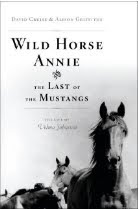








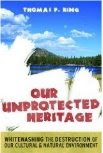



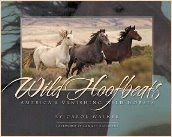




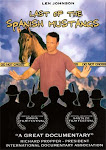





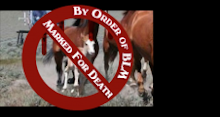

1 comment:
Hello. This post is likeable, and your blog is very interesting, congratulations :-).
Samantha
Best Affordable Security Systems Suitable for Renters and Apartments, Business and RV
Post a Comment